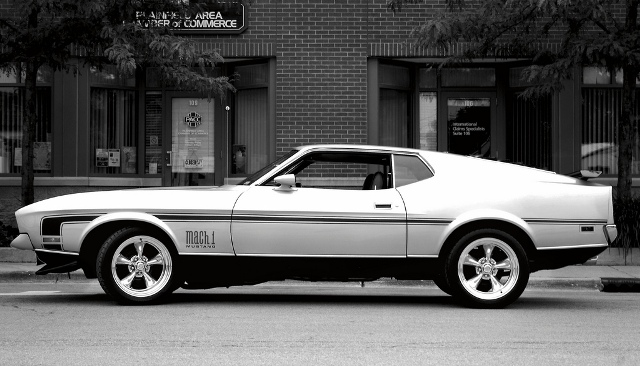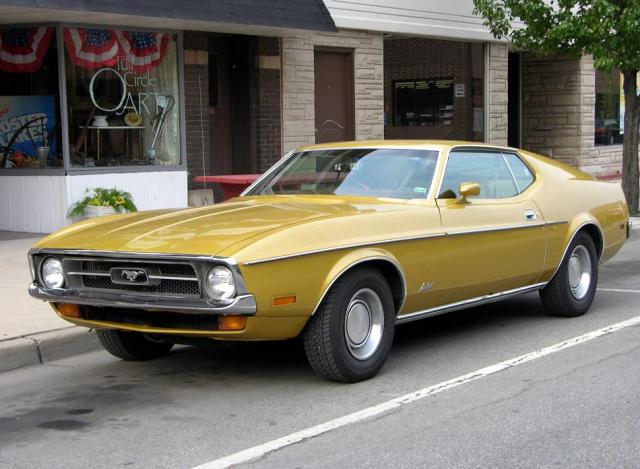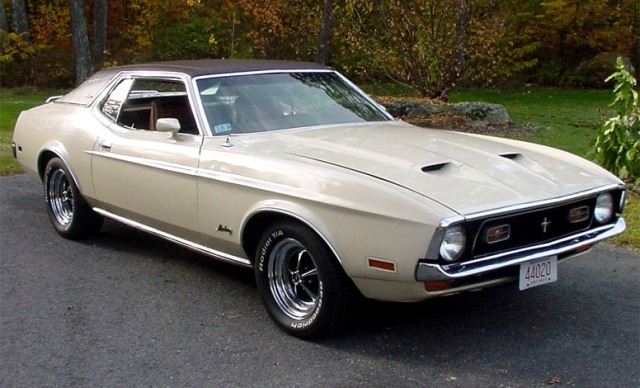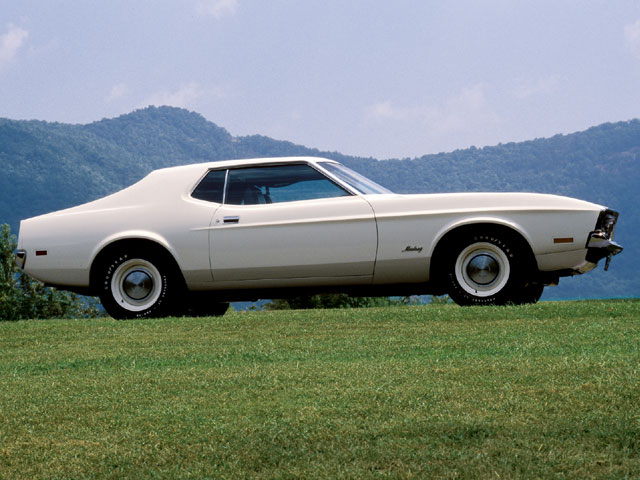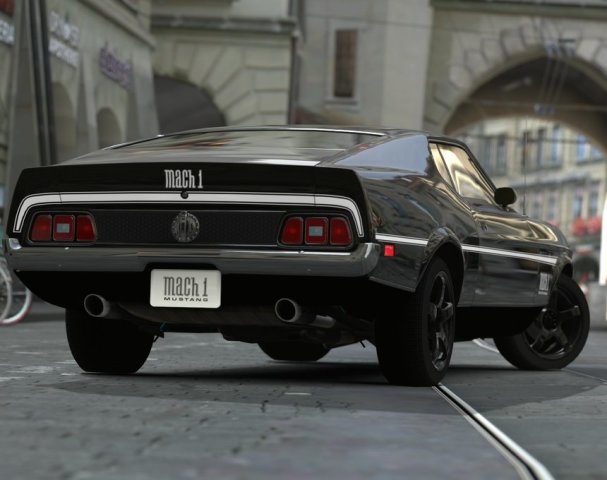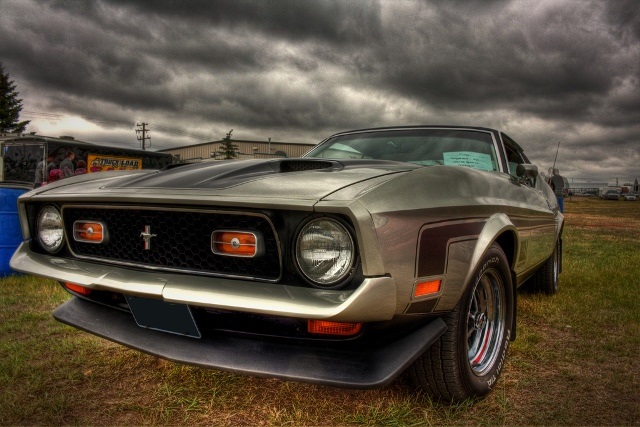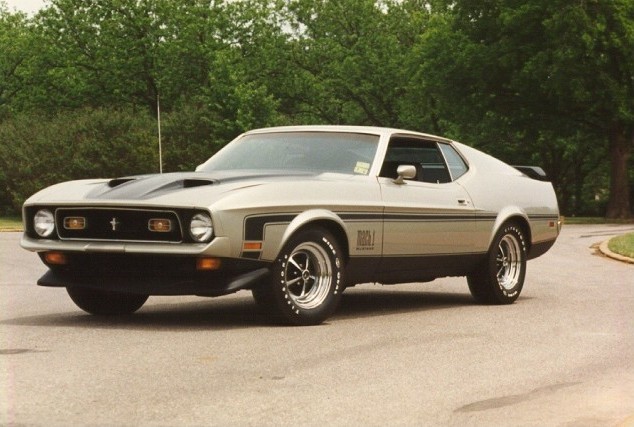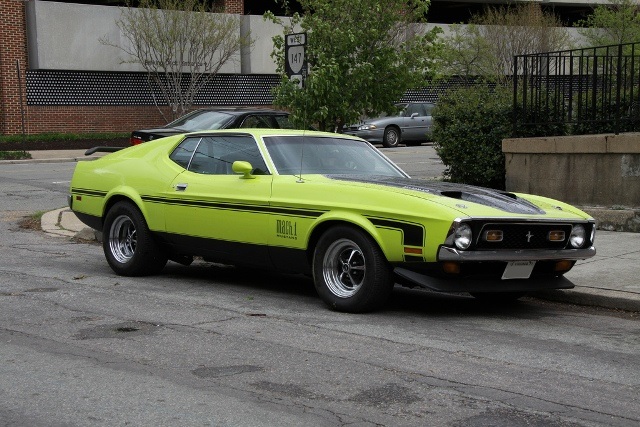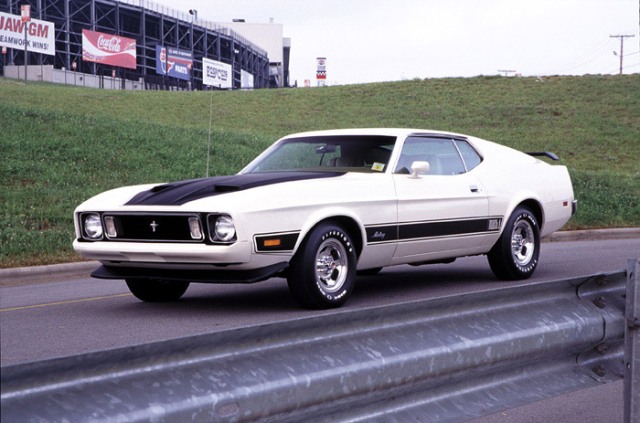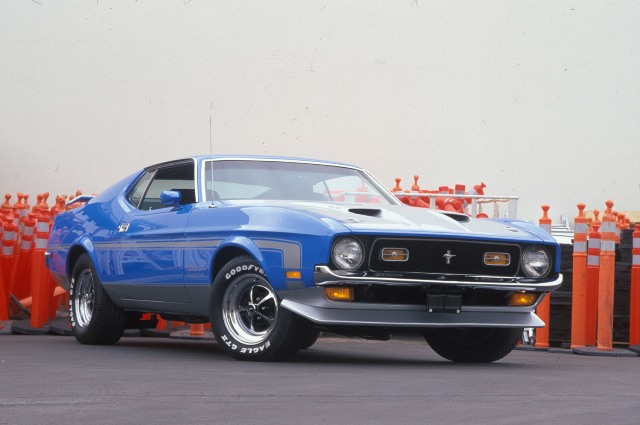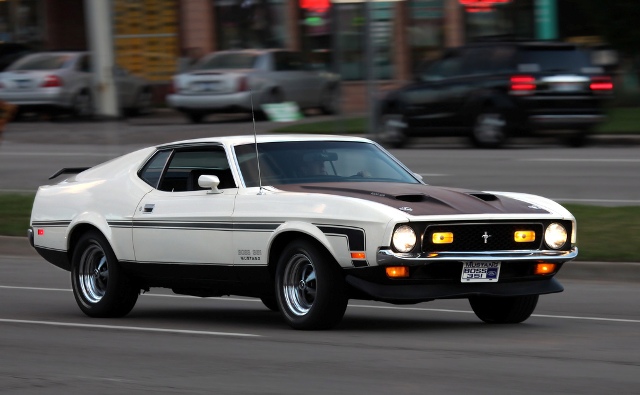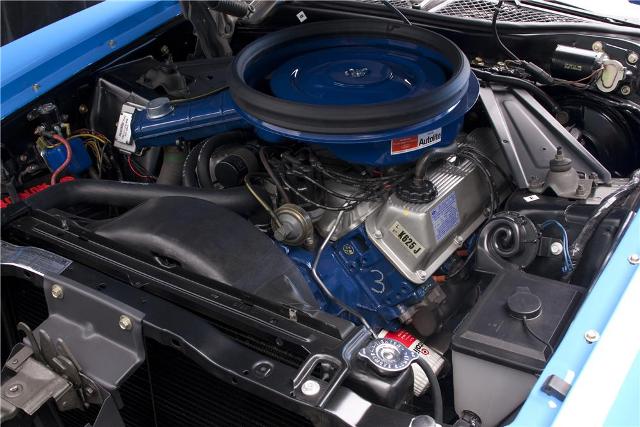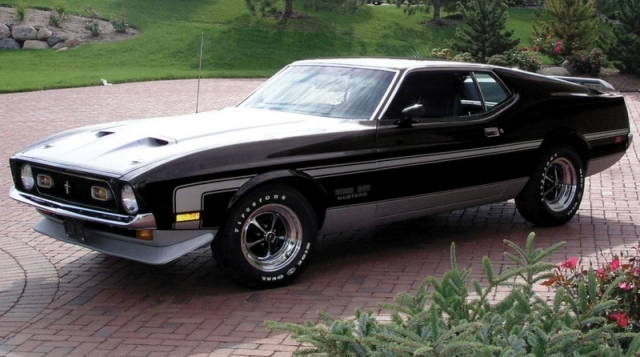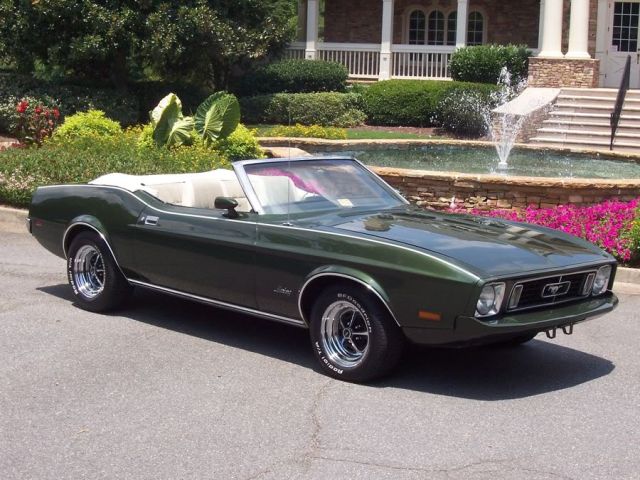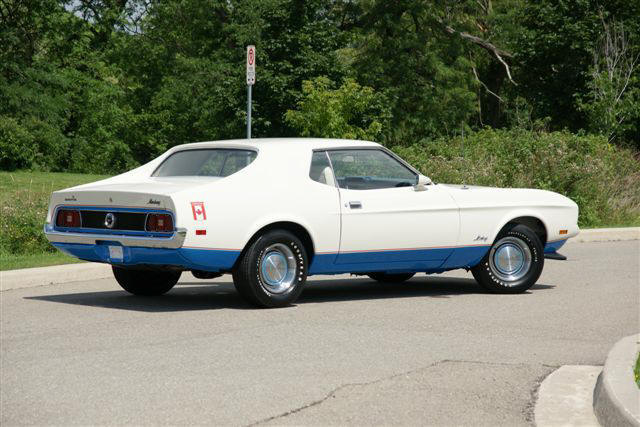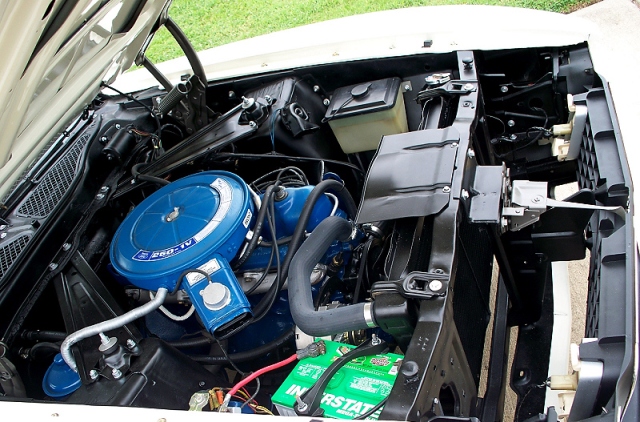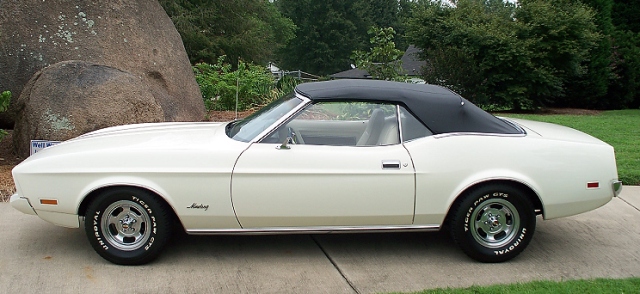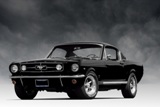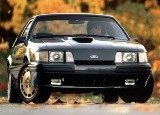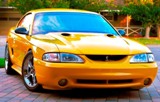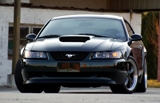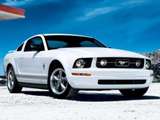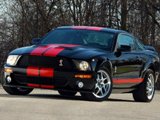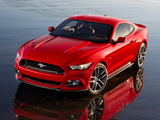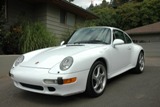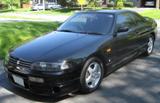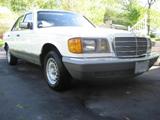Enthusiast's Corner
1971-1973 Ford Mustang: The Big Beast
Written by James Dolan
The 1971-1973 Ford Mustang is a polarizing car. Some love its overt muscle car styling while others despise everything that this Mustang stands for and there are very few people on the fence. I for one am one of those who are on the fence. While not my favorite Mustang by far, I can appreciate the ’71-’73 models for what they are or more accurately what they were attempting to be. By no means was the 1971-1973 Mustang a bad car, it was more a victim of being the wrong car, produced for the wrong time. Just like the ’67-’68 and ’69-’70 cars the ’71-’73 Mustangs grew, and once again the justification was to install larger engines. However this upsizing went too far and the once svelte, compact Mustang was now an obese intermediate sized beast.
The man responsible for this fatting was none other than Bunkie Knudsen, the racing fanatic, muscle car loving, former General Motors executive who may not have totally understood the original concept of the Mustang. Knudsen envisioned the Mustang as a big engine, high powered, total performance machine with an imposing presence on the road. However times were changing; insurance rates for high powered cars was sky rocketing; strict, power stifling emissions regulations were coming into effect; an energy crisis was looming and social attitudes were towards muscle cars were changing. Some executives in the industry could feel that the winds of change were coming but Knudsen was blind to the signals; too punch drunk on power and size to open his eyes and recognize that the heyday of racing had passed; the Mustang was the victim of his obsessions.
Interestingly, Knudsen was sacked in September of 1969, a year before his 1971 Mustang was introduced. Knudsen was never given a reason for his ousting; some within Ford said it was because he never knocked when he entered Henry Ford’s office, which drove Ford around the bend. Others have said that the reason was because Knudsen just wasn’t working out, that he was out of step with Henry’s intended direction for the company and Knudsen’s Mustang was just one prime example.
One can only imagine what Lee Iacocca thought about the 1971 Mustang. He had famously berated the ’67 model as being a “fat pig” after it had nominally grew only an inch here and there and gained only 130 pounds compared to the original car. Now the Mustang was gargantuan measuring a whopping 3-inches wider, 2-inches longer weighing in at 400 pounds heavier than the already sizable car from 1970.
Truly a huge car, the 1971 Mustang lost many aspects that made the original car so great. As a matter of fact the new car bore little resemblance to the 1964 model and many of those cars characteristics were lost as well. Gone was the light sporting feel and commanding views from the cot pit, replaced by low seating positions, debilitating blind spots and the feeling of being buried in a bunker. This is especially true for the SportsRoof body with its expansive rear quarter panels, almost flat roof and nearly horizontal rear window that allowed only a sliver of visibility out back. Even outward vision out front was hindered by the seating position and hood bulges making this Mustang a challenge to drive and park.
While it was big and heavy the 1971 Mustang did have an imposing road presence. In true muscle car fashion the ’71 was styled to look long, low, wide and powerful. Every dimension of the Mustang increased with the exception of height which was a half inch lower. Once again three body styles were available: hardtop coupe, SportsRoof fastback and a convertible. All ’71 Mustangs had dual headlamps surrounded by full width grilles and clean-looking, u-shaped bumpers were mounted close to the body. As per Mustang tradition all bodies featured a long hood short deck design on every body style.
Those long hoods extended all the back over the cowl hiding the wipers underneath. The slope angle of the windshield was increased and roof height lowered giving the car a long, low appearance. Along the sides the beltline was raised and swept up behind the door and door handles were mounted flush. A crease running half way along the body added some visual appeal to the expansive sides. At the rear the tail was cropped with a subtle duck-tail spoiler molded in and just like up front the u-shaped bumper was nicely integrated close to the body work. Once again tri-bar tail-lights reappeared, however this time they had a more rounded appearance.
SportsRoof models looked particularly heavy in the rear with their aforementioned broad, uninterrupted quarter panels and virtually flat roof-line. Coupes looked less bulky at the rear; however the rear roof quarters had emphasized flying buttresses and a higher rear deck than the previous car. In some colors and angles I personally prefer the styling of the coupe to the SportsRoof but that is a matter of personal taste.
Of the three body styles the convertible is perhaps the most handsome with the raised belt-line kicked up behind the door leading to the high deck making the car look particularly clean and mature. With the top up or down the convertible is appealing forgoing the heavy rear quarter appearance of the SportsRoof or heavily buttressed coupe. Thankfully the 1971, ’72 and ’73 Mustangs were devoid of non-functioning scoops and other gimmickry, although customers’ could order a scooped hood but at least these functioned depending on what engine was under the hood.
The main motive for the growth of the ’71-’73 Mustangs was to allow the installation of larger engines. As demonstrated by the 1969 and 1970 Boss 429, Ford’s new 385-series engines didn’t fit in the Mustang’s engine bay without major modifications. Although the thin-walled 385-series engines were lighter than the FE-series engines they replaced, the 385-series was much wider thanks to its free-breathing canted-valve heads. A performance conscious Knudsen knew that if the Mustang was to have a big-block engine installed then the latest car required increased engine room. Knudsen got his wish and once again the big block 429 Cobra Jet engine powered a Mustang for 1971 but perhaps the price for his wish was too great as Knudsen was unceremoniously let go before the car was introduced.
Power plants for the Mustang were pretty much carrying over from 1970. The 250-ci six with 145-horsepower was still standard fare. Standard in the Mach 1, optional in others, was the 302-ci V-8, now rated at 210-horsepower. Two and four-barrel 351’s came back with 240 and 285-horsepower respectively and the 429 Cobra Jet made its grand finale for 1971. But the real news was what was lurking under the hood of the new Boss 351 with its new 351 cu-in HO V-8.
1971-1973 Mach 1
Making a triumphant return to the ranks was the ever popular Mach 1 package that steadfastly adhered to its performance/luxury formula. External image enhancements for the new Mach 1 included a body colored front bumper molded from urethane matched up with monochrome fender and hood trim pieces. The grille was changed to a black honeycomb affair that housed horizontal “sports lamps” just inboard of the headlamps. Base 302-ci Mach 1’s were equipped with the standard flat hood with no scoops or special paint treatment, however a cool non-functional dual Ram Air hood was available at no extra cost that had a large contrasting color stripe up the centre and twist type locks giving the car an appealing, sporty look. A functional version of the hood was standard if any of the optional V-8’s were ordered. The bottom sides of the car were painted a contrasting color of either black or silver depending of the choice of body color. Body colored sports mirrors were standard and added a sporty flair.
At the rear the Mach 1 still had the standard chrome rear bumper but added a black honeycomb appliqué between the taillights along with the trick pop open gas cap and a contrasting triple horizontal stripe and large “Mach 1” decal on the trunk lid. To complete the look a popular option was the addition of contrasting body side stripe that ran the length of the car.
Suspensions on all Mach 1’s were enhanced with the Competition Suspension package that included larger tires, higher rate springs, stiffer shocks, quick variable ratio power steering and larger sway bar at both ends. Magnum 500 wheels with fat white lettered tires were optional. Once again a plethora of rear axle ratios ranging from a tall 2.79:1 with a 302 up to a ridiculously short 4.11:1 optional with 429 Super Cobra Jets. Limited-slip or open differentials were available depending on engine and transmission choice. Although these heavy Mustangs were not known for their handling agility, preferring to push around a corner with copious amounts of under steer, a properly equipped Mach 1 could be made into a decent handling car for its mammoth size and weight.
Although the price of the Mach 1 was up by a considerable $200 for 1971, a 302 was now standard in place of the customary 351. Ford’s reasoning for the change was to broaden the appeal of the Mach 1 but with the slight horsepower decease from 1970 and the added girth of the new body one can only see this as a blunting of the Mach 1’s sporty image.
Still, there was an abundance of great engines to choose from like the warm 2-barrel 351 to the hot 4-barrel 351, all the way up to the menacing 429 Cobra Jet and Super Cobra Jet with the drag package. Every V-8 was available between the fenders of the Mach 1 with one exception, the super sweet 351 HO that was exclusive to the Boss 351.
Packaging of the Mach 1 changed little from ’71 to ’73, however it was changes to emissions regulations from 1972 on that really changed the character of all Mustangs for the worst, not just the Mach 1.
1971 Boss 351
“Breathtaking” is probably the best word to describe the performance of the 1971 Boss 351 Mustang. It doesn’t matter if you are a muscle car enthusiast or not, driving a Boss 351 Mustang is a treat for the senses and I would dare any driver not to crack a smile as they grab the Hurst shift lever and row through those heavy gears with the engine at full song. While the Ford Motor Company might have been getting out of the racing game in late 1970, the Boss 351 was one last hurrah for the enthusiast.
Based on the Mach 1, the Boss 351 shares most of the Mach 1’s visual cues, the only differences being the chrome front bumper and model badging, otherwise one car is a dead ringer for the other. The Boss 351 also shares many of its performance enhancements with the Mach 1 with some notable additions like larger 15-inch tires, a wide ratio four-speed transmission with Hurst shifter, the Traction-Loc differential with a 3.91:1 gear ratio, power front disc brakes, high capacity cooling system, a heavy-duty battery, dual exhaust, rear spoiler and gauge package. But what made the Boss 351 a true stallion was its exclusive high output (HO) 351 V-8 engine.
Ford power train engineers worked the same magic on the 351 HO as they did with the Boss 302 engine. The bottom end of the engine featured a crank cast from high nodular iron that was tested for hardness. Forged-aluminum pistons were attached to forged connecting rods that had been Magnafluxed and shot peened. Higher up the excellent free-flowing heads were pretty much taken from the Boss 302, the only difference being that the cooling passages had been revised. Both engines shared the same valve train; however the Boss 351 HO had a much more aggressive high-lift cam than the Boss 302. Topping off the 351 HO was a Dual-plane intake manifold made of aluminum and a four-barrel, 750-cfm Autolite carburetor to feed those cylinder chambers. With a stratospheric 11.0:1 compression ratio and those exceptional heads the 351 HO was able to produce a hearty 330-horsepower and just like its smaller brother, the Boss 351 HO was a real screamer that loved high engine speeds, forcing Ford to once again make use of a rev limiter.
With the 351 HO engine installed in the Boss 351 it was able to crack off acceleration times that were much quicker than a Mach 1 equipped with a mighty 429 proving once again that ultimate performance didn’t require a massive big-block. While the Boss 351 was terrifyingly fast in a straight line, it unfortunately didn’t inherit the Boss 302’s crisp handling traits. Even with the Competition Suspension the Boss 351 couldn’t mask the fact that it was a big, overweight car. Road testers often complained about a harsh ride from the stiff suspension that was also much too easy to bottom out from lack of wheel travel. While the Boss 351 resembled a road racer it was ultimately better suited to the drag strip. Even with its handling pitfalls, the Boss 351 is the ultimate Mustang from the 1971-1973 era.
1972-1973 Mustangs
Nineteen seventy-two and seventy-three saw very little change for the Mustang, save for some changes to trim and packaging. In order to spice things up a little and boost slumping sales the Sprint package was unleashed in mid-year of ’72. There were two versions of the Sprint available; the “A” option was a trim package that sported two-tone white paint with blue lower bodywork and twin blue stripes along the hood and deck lid all accented with red pinstripes. Up front the front bumper and nose trim was painted body color just the same as the Mach 1, sport mirrors were standard as were wheel color-keyed hubcaps with bright trim rings. To top things off “USA” shields were added to the quarter panels. Inside the interior was treated to a similar two-tone blue and white with red pinstripe treatment. Package “B” added some substance by adding the competition suspension, mag-style rims and wide, white-lettered tires to the “A” package.
For the first time the Mustang continued on for a third year without a major body change in 1973. The nose did receive a new look with a new grille and vertical turn signal lights mounted next to the headlights. Front bumpers were now painted body color and heftier in order to meet a newly mandated five mile and hour impact standard. While most vehicles ended up with some horrible looking override add-ons or massive looking bumpers to meet the standard, the Mustang didn’t look much different with the new bumper integrating very nicely into the body of the car.
The biggest changes for the Mustang in ’72 and ’73 were under the hood and for performance enthusiasts these changes weren’t good. In order to meet tightening emissions regulations engines were detuned and started losing power, lots of power. Compression ratios of all engines needed to drop in order to run cleaner and with that came lower horsepower. The once adequate 250-ci six was now down to a paltry 99-horsepower. Eight-cylinder Mustangs didn’t fare much better with the 302 only being able to muster 141-horsepower, a number less than the 250-ci six was rated the year before. Power for the 351 2-barrel dropped down to 177-horsepower but the once mighty 4-barrel didn’t suffer as badly at respectable 266-horsepower.
Thankfully the 351 HO from the Boss 351 made a return for ’72 but its performance was blunted as well. The HO was mandated to run on lower octane unleaded fuel. So while the basic innards of the HO remained the same, pistons and cylinder heads needed to be changed. Compression was lowered from a sky high 11:1 to a very low 8.8:1 and a considerably tamer cam was used to allow the engine the ability to run on unleaded gas. Even with these changes the 351 HO could still churn out a satisfying 275-horsepower, enough to propel the Mustang to 60 miles an hour about 6.6 seconds. Finally to add insult to injury the monster 429 Cobra Jet and Super Cobra Jet engines were dropped after 1971 because of lack of sales. This put the reasoning behind the large Mustang into serious question as the sole justification for enlarging the car was to have the ability to install these large big block engines. With sales falling and regulatory and social changes developing, the Mustang needed to quickly take a change in direction and with Lee Iacocca in complete charge a radically new Mustang was launched for 1974.
Click here to continue reading on the next page about the down sized Mustang II...
Most Popular Articles

Japanese Nostalgic Vehicles: The next trend in classic cars
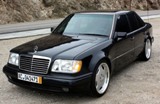
Five Sports Sedan's I'd Love to Own
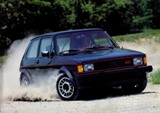
Hot Hatchbacks From the 1980's

Volvo 200 Series: An Unappriciated Classic
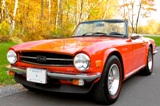
Triumph TR-6: Music to Anyone's Ears
Fifty Years of Mustang
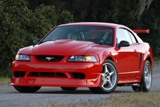
1999-2001 Ford Mustang SVT Cobra
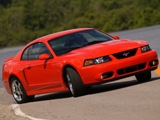
2003-2004 Ford Mustang SVT Cobra
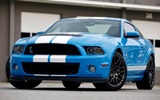
2010-2014 Ford Mustang Shelby GT500
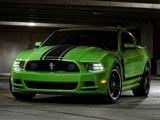
2012-2013 Ford Mustang Boss 302
Driven

Volvo 200 Series: An Unappriciated Classic

Triumph TR-6: Music to Anyone's Ears
1993 Nissan Skyline GT-s and GT-R Coupe

